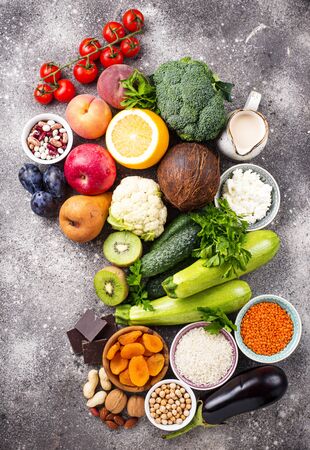Introduction to British Superfoods
Superfoods are a term widely used to describe nutrient-dense foods that deliver significant health benefits due to their rich concentrations of vitamins, minerals, antioxidants, and other essential nutrients. While the label “superfood” is often applied globally to exotic ingredients like acai berries or quinoa, there is a growing recognition of the nutritional powerhouses cultivated right here in the UK. British superfoods encompass a variety of fruits, vegetables, and grains that are either native to the region or have adapted well to its climate and soils, including blackcurrants, kale, watercress, seaweed, and barley. These home-grown options not only offer impressive health credentials but also come with reduced food miles and a lower environmental footprint compared to imported alternatives. This article explores how embracing British superfoods can contribute both to personal wellness and the sustainability of our food system.
2. Cultivation Methods and Carbon Footprint
When assessing the environmental impact of British superfoods, it is crucial to examine the cultivation methods employed by local farmers and how these practices affect greenhouse gas emissions. British growers often utilise sustainable techniques such as crop rotation, reduced pesticide use, and organic fertilisers, which contribute to lower carbon footprints compared to intensive farming systems abroad. Local production also minimises food miles—the distance food travels from farm to consumer—resulting in further reductions in emissions.
Comparative Greenhouse Gas Emissions
The table below highlights the estimated carbon footprint (kg CO2e per kg) for select British superfoods versus commonly imported alternatives:
| Superfood | British-Grown (kg CO2e/kg) | Imported Alternative (kg CO2e/kg) |
|---|---|---|
| Blackcurrants | 0.6 | Açai Berries: 8.2 |
| Kale | 0.4 | Spinach (Spain): 1.8 |
| Barley | 0.5 | Quinoa (Peru): 3.7 |
| Sea Buckthorn | 0.7 | Mango (India): 5.0 |
Sustainable Practices Reduce Emissions
The adoption of regenerative agriculture and integrated pest management within the UK not only preserves soil health but also decreases dependency on synthetic inputs that are energy-intensive to produce. Moreover, shorter supply chains mean fresher produce with less spoilage, translating into less waste—a significant source of methane emissions if sent to landfill.
The Role of Seasonality and Local Sourcing
By prioritising seasonal, British-grown superfoods, consumers can directly contribute to lowering the overall carbon footprint associated with their diet. This approach not only supports local agriculture but also helps foster a more resilient and environmentally responsible food system in the UK.

3. Biodiversity and Ecosystem Preservation
Superfood cultivation in the UK is increasingly recognised for its potential to enhance local biodiversity and protect vital natural habitats. By shifting agricultural focus towards native and climate-resilient crops such as blackcurrants, sea buckthorn, and kale, British farmers can diversify planting schemes beyond traditional monocultures. This diversification not only supports a broader range of flora and fauna but also strengthens ecosystem resilience against pests and diseases.
The use of hedgerows, wildflower margins, and organic farming methods associated with many superfood growers fosters habitats for pollinators, birds, and beneficial insects. For example, the cultivation of Scottish blueberries under agroecological practices has led to increased sightings of bumblebees and other pollinators, directly contributing to regional biodiversity goals set by the UK government.
However, it is essential to assess each superfood’s environmental footprint. While some imported “superfoods” may threaten ecosystems through intensive farming or habitat loss abroad, home-grown alternatives typically have a smaller impact due to shorter supply chains and integration within existing British landscapes. As consumer demand rises, careful management is necessary to prevent over-cultivation or displacement of sensitive habitats.
In summary, promoting British superfoods with sustainable agricultural practices can play a pivotal role in biodiversity conservation. This approach aligns with national objectives for ecosystem restoration while offering consumers nutritionally dense choices that support both human health and the environment.
4. Water and Soil Sustainability Factors
Assessing the sustainability of British superfoods requires a closer look at their influence on soil health and water resources. The cultivation of these nutrient-rich crops, such as kale, blackcurrants, and sea buckthorn, can have varying effects on local ecosystems depending on farming methods and regional conditions.
Soil Health: Regenerative Practices vs. Conventional Methods
Superfood production in the UK often relies on either conventional or regenerative agricultural practices. Regenerative agriculture prioritises soil fertility through crop rotation, cover cropping, and minimal tillage, which can enhance organic matter and soil biodiversity. Conversely, intensive monocultures may lead to soil degradation and erosion over time.
| Farming Method | Impact on Soil Health |
|---|---|
| Regenerative Agriculture | Improves soil structure, increases carbon sequestration, boosts nutrient content |
| Conventional Monoculture | Risk of nutrient depletion, compaction, and reduced microbial diversity |
Water Usage and Conservation Strategies
The environmental impact of British superfoods also hinges on water use efficiency. Some crops, like oats and certain berries, are naturally suited to the UK’s rainfall patterns and require minimal irrigation. However, others may demand supplementary watering during dry spells, potentially straining local water supplies if not managed responsibly.
| Superfood Crop | Typical Water Requirement |
|---|---|
| Kale | Low – adapts well to natural rainfall |
| Blackcurrants | Moderate – occasional irrigation needed in dry periods |
| Quinoa (UK-grown) | Low to Moderate – drought-resistant varieties available |
Sustainable Agricultural Solutions in the UK Context
Many British farmers are adopting solutions such as rainwater harvesting, drip irrigation, and organic mulching to minimise water wastage and maintain soil moisture. These strategies not only support sustainable yields but also protect vital natural resources for future generations.
The Bottom Line for Sustainable Nutrition
The environmental impact of British superfoods is closely tied to the stewardship of water and soil. By embracing sustainable agricultural practices, the sector can offer nutritional benefits without compromising the ecological integrity of rural landscapes.
5. Local Consumption and Food Miles
One of the most significant environmental benefits of British superfoods lies in their potential to reduce food miles. Food miles refer to the distance food travels from where it is grown to the point of consumption, and this journey often involves considerable carbon emissions, especially when foods are imported from abroad. By prioritising locally sourced British superfoods such as blackcurrants, kale, sea buckthorn, and watercress, consumers can directly lower the environmental impact associated with long-distance transport.
The Impact of Reduced Transport
Importing exotic superfoods like goji berries or quinoa typically involves extensive air or sea freight, both of which contribute substantially to greenhouse gas emissions. In contrast, supporting homegrown produce means that transportation is often limited to short road journeys within the UK, resulting in a marked reduction in overall carbon footprint. According to research from the Department for Environment, Food & Rural Affairs (DEFRA), domestic food production significantly decreases emissions when compared to imported equivalents, making local choices more sustainable.
Supporting Sustainable Diets
Choosing British superfoods also aligns with broader goals for sustainable nutrition. Locally grown crops are generally harvested at peak ripeness and reach consumers fresher, retaining more nutrients and reducing the need for preservatives or extensive packaging. This enhances both the health profile of British diets and minimises waste throughout the supply chain.
Encouraging Regional Food Networks
Embracing British superfoods supports regional farmers and strengthens local food networks. This not only fosters greater food security but also encourages agricultural practices that are adapted to the UK’s climate and biodiversity. With increased consumer demand for local produce, there is an incentive for growers to adopt environmentally friendly methods such as crop rotation and reduced pesticide use, further contributing to a sustainable food system.
Ultimately, by opting for British superfoods, individuals can play a pivotal role in reducing food miles while supporting a more resilient and eco-conscious food culture in the UK.
6. Challenges and Opportunities for British Superfoods
The increasing interest in British superfoods presents both significant challenges and promising opportunities within the UK food system.
Barriers to Widespread Adoption
Despite their environmental benefits, several barriers hinder the mainstream adoption of sustainable British superfoods. Firstly, consumer awareness remains limited; many shoppers are more familiar with imported ‘superfoods’ like quinoa or chia seeds than with local options such as sea buckthorn, blackcurrants, or kale. Additionally, price sensitivity is a concern. British-grown superfoods often come with higher production costs due to smaller scale operations, making them less competitive against mass-produced imports. Supply chain limitations also exist: inconsistent yields caused by the UK’s variable climate can disrupt reliable sourcing for retailers and food manufacturers.
Opportunities for Growth in the UK Food System
Nevertheless, there are compelling opportunities to foster growth in this sector. Increased investment in agricultural research could help improve crop resilience and yields, reducing costs and boosting availability. The promotion of seasonal eating—through public campaigns and educational initiatives—may encourage consumers to choose locally grown superfoods, reducing food miles and supporting rural economies. Policy incentives such as subsidies or grants for sustainable farming practices could further strengthen domestic supply chains.
Collaborative Innovation
Collaboration between farmers, food producers, retailers, and policymakers is essential. By fostering networks that support knowledge exchange and innovation, stakeholders can address technical challenges and co-create value-added products that appeal to health-conscious consumers.
Consumer Engagement
Finally, engaging consumers through transparent labelling and storytelling around provenance can build trust and loyalty towards British superfoods. As sustainability becomes an increasingly important purchasing criterion, promoting the unique environmental advantages of homegrown crops offers a strong foundation for future growth within the UK’s evolving food landscape.

